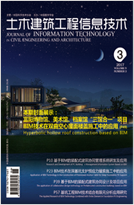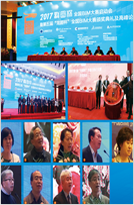2023, 15(2): 18-23. doi: 10.16670/j.cnki.cn11-5823/tu.2023.02.04
基于改进模拟退火的乡村垃圾投放点选址优化
上海建工四建集团有限公司 工程研究院,上海 201103 |
Optimization of Rural Garbage Placement Location Based on Improved Simulated Annealing Algorithm
Shanghai Construction No.4 (Group) Co., Ltd., Shanghai 201103, China |
引用本文:
许璟琳, 余芳强, 张铭, 谈骏杰, 谷志旺. 基于改进模拟退火的乡村垃圾投放点选址优化[J]. 土木建筑工程信息技术,
2023, 15(2): 18-23.
doi: 10.16670/j.cnki.cn11-5823/tu.2023.02.04

Citation:
Jinglin Xu, Fangqiang Yu, Ming Zhang, Junjie Tan, Zhiwang Gu. Optimization of Rural Garbage Placement Location Based on Improved Simulated Annealing Algorithm[J]. Journal of Information Technologyin Civil Engineering and Architecture,
2023, 15(2): 18-23.
doi: 10.16670/j.cnki.cn11-5823/tu.2023.02.04

摘要:针对乡村地区垃圾投放点选址通常未考虑建筑朝向、缺少对垃圾投放点影响的量化等问题,基于乡村地区倾斜摄影模型,结合乡村建筑物的特点,提出一种改进模拟退火算法的乡村垃圾投放点选址优化方法。基于先验的地理信息数据提出确定垃圾投放点初始候选位置的原则,设计了基于倾斜摄影模型计算垃圾投放距离和垃圾影响距离的方法;引入房屋朝向因子,构建适用于乡村地区垃圾投放点选址问题的多目标优化模型;提出新的邻域策略,较传统模拟退火算法更容易跳出局部最优。通过初始候选位置的优化降低了大量垃圾投放点选址问题的复杂度,最优方案较好的平衡了垃圾投放距离和垃圾影响范围等影响因素,在东南沿海某村庄垃圾投放点选址中验证了方法的有效性;通过对比分析证明具有较高的搜索效率、选址结果也更为合理。
Abstract: The placement of garbage in rural areas usually does not take into account the orientation of buildings and lack of quantification of its impact, etc. Based on the oblique photography model in rural areas and the characteristics of rural buildings, this paper proposed an optimization method for the placement of rural garbage by improving multi-objective simulated annealing algorithm. According to the proposing principles for determining initial candidate locations for garbage based on a priori geographic information data, this study presented new solutions. Firstly, the method of calculating the garbage disposal distance and the garbage influence distance based on the oblique photography model was designed. Secondly, a multi-objective optimization model for garbage placements in rural areas was constructed by introducing the house orientation factor. Thirdly, the study proposed a new neighborhood strategy, which was easier to jump out of the local optimum than the traditional MOSA algorithm. This method reduced the complexity of location selection for a large number of garbage can placements by optimizing the initial candidate positions; the optimal solution balances the influence factors, such as the distance and the influence range of garbage. The effectiveness of the method was verified in the site selection - a garbage placement point in a village in southeast coast. The comparative analysis with other algorithms proves that the proposed method has higher operating efficiency and more reasonable location selection results.
计量
- PDF下载量(24)
- 文章访问量(1424)
- HTML全文浏览量(1623)















